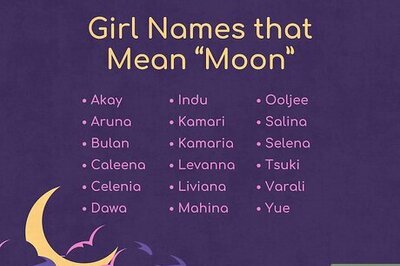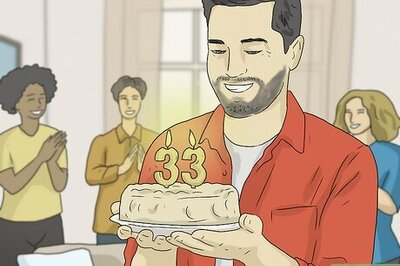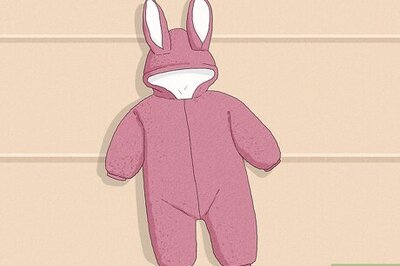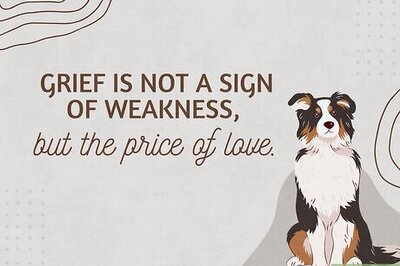
views
What exactly is the “found family” trope?
The “found family trope” is a plot device in books, movies, and TV. It explores the relationships between characters who are not blood related, but love each other as family, nonetheless. Usually, the characters have been separated from (or abandoned by) their biological families, so they create their own makeshift family units with close friends. These “chosen families” bring unconditional love and acceptance to characters who don't receive these things from blood relatives. Most of the time, the bonds between found families are based on shared experiences or mutual trust. For example, in The Hunger Games, Katniss, Peeta, and Haymitch become each other’s found family because they go through the harrowing experience of the games together. They also understand each other in a deep, personal way because they've all had the uncommon experience of being a "tribute."
Found Family Trope Examples
Books One well-known example of the found family trope would be the Harry Potter series. In the books, Harry doesn’t receive a lot of love from his biological family, made up of his cruel aunt, uncle, and cousin. However, after learning he’s a wizard, Harry builds deep bonds with his classmates, teachers, and mentors, who end up comprising his found family. Here are a few more examples: The Lord of the Rings series by J.R.R. Tolkien The Percy Jackson series by Rick Riordan The Mistborn series by Brandon Sanderson The Mysterious Benedict Society series by Trenton Lee Stewart Howl’s Moving Castle by Dianna Wynne Jones Six of Crows by Leigh Bardugo The House in the Cerulean Sea by TJ Klune Spinning Silver by Naomi Novik One Last Stop by Casey McQuinston Meddling Kids by Edgar Cantero The Raven Boys by Maggie Stiefvater A Man Called Ove by Fredrik Backman
Movies The found family trope makes an appearance in a wide variety of movies, including the Guardians of the Galaxy series. In these films, a group of non-blood related characters must work together to defeat a supervillain with plans to take over the world. In the process, they end up forming lasting relationships, and they eventually become each other’s chosen family. Other examples include: The Avengers movies (2012-2019) Lilo & Stitch (2002) Paddington (2014) Raya and the Last Dragon (2021) School of Rock (2003) The Perks of Being a Wallflower (2012) A League of Their Own (1992) The Grand Budapest Hotel (2014) The Dead Poet’s Society (1989) The Holdovers (2023)
TV Shows A prime example of the found family trope in TV would be Glee. In this show, a group of misfits (and some popular kids) connect over their love of singing in their school’s show choir. Although the characters aren’t blood related, they end up supporting each other like family, especially when members of the club face bullying at school or struggles at home. Here are a few more shows to check out if you’re looking for this trope: Pose Stranger Things Friends The Mandalorian The Good Place Daisy Jones and the Six Grey’s Anatomy Outer Banks The Office New Girl How I Met Your Mother
Why do people love the found family trope?
The found family trope is a heartwarming and comforting plot device. It resonates in a particularly deep way for members of the LGBTQ community, who can sometimes be rejected or shunned by their biological families when they come out. For these people, the found family trope can be an inspiring reminder that love comes in all kinds of forms, that there's more to family than blood, and that there are people out there who will accept them unconditionally.
Other Literary Tropes
The found family trope is just the tip of the iceberg. There are tons of popular tropes you’ve probably come across in your favorite books, movies, and TV shows. Here are a few common ones to check out: The “chosen one” trope: Common in the Sci Fi and Fantasy genres, this trope centers around a main character who is fated or destined to save the world. Examples include the Harry Potter, Lord of the Rings, and Dune series. The “orphan hero” trope: Common in “coming of age” stories. Follows a main character who is an orphan as they grow up and take charge of their life. Examples include David Copperfield and Jane Eyre. The Harry Potter series could also fit into this category (as well as the “chosen one” trope). The “enemies to lovers” trope: Popular in the Romance genre, this plot device explores the relationship of two characters who start out disliking each other but eventually fall in love. Examples include the books Pride and Prejudice and Red, White, and Royal Blue, and movies The Proposal and 10 Things I Hate About You. The “love triangle” trope: Follows the complicated romantic relationships between three characters. This trope is super common, but a few popular examples include The Hunger Games (Peeta, Katniss, and Gale) and Twilight (Bella, Jacob, and Edward).




















Comments
0 comment